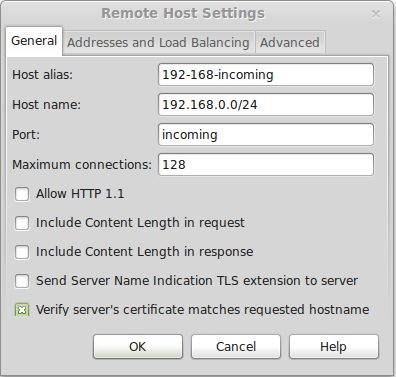KB Article #176080
How to configure an incoming remote host
What is a Remote Host
The remote host is an API Gateway feature that is normally used to configure specific connection features for the outward connection. That is for the connection the gateway makes to the backend service. The remote host can for example specify details like the http version, whether to add content-length http headers, various timeouts and even implement address mapping and load balancing.
It is possible to set a remote host to configure the connection for an "incoming" connection. That is for the connection from the client to the API Gateway. This will sometimes be needed to establish http compatibility with certain non compliant clients with the content-length header and http version settings.
How to configure
Indicate the port as "incoming", rather than any specific port on the local machine - because the port is referring to the remote address of the TCP connection, and incoming connections arrive from effectively arbitrary remote ports, this acts as a wildcard for all incoming connections.
For the address of the remote host, you must specify the IP address of the host, rather than the DNS name.
A CIDR style netmask can be specified, eg: 192.168.0.0/24 will match any address in the 192.168.0.x range. This works on a longest-match basis if more than one network specification matches the client.
example CIDR style "incoming" remote host
